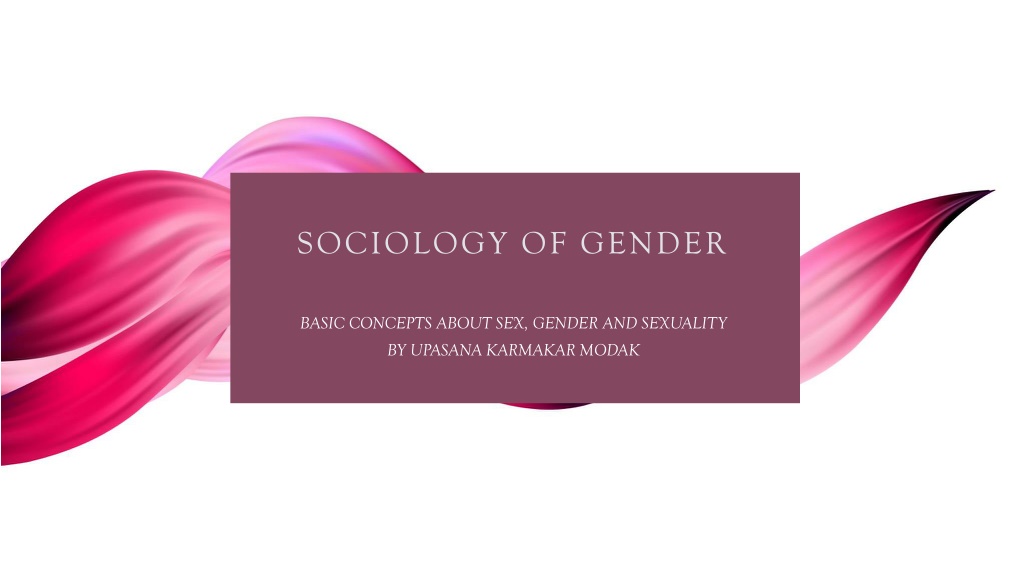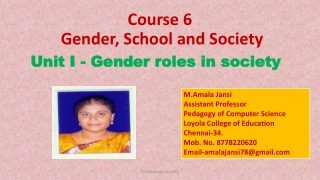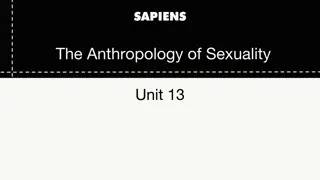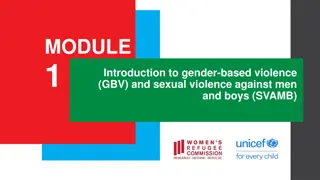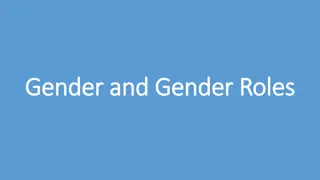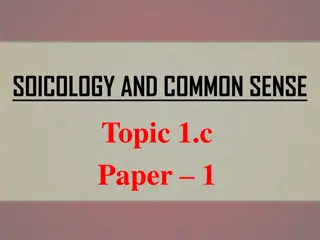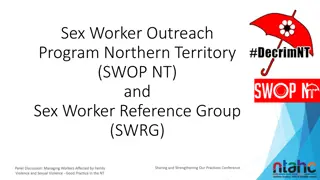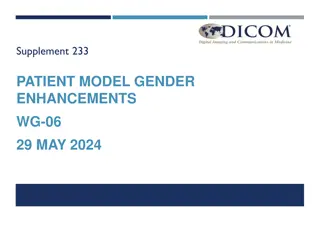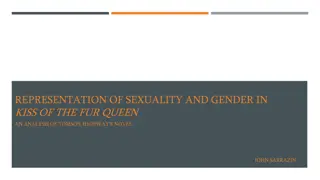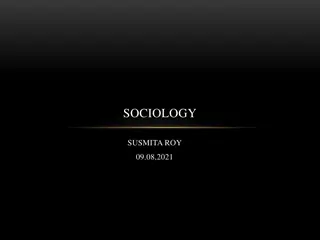Understanding Sex, Gender, and Sexuality in Sociology
Sex refers to physical differences, while gender relates to social distinctions between male and female. Sexuality involves sexual feelings, and gender identity defines self-conception based on gender roles. Transgender and transsexual individuals may differ in their expression of gender identity. Sexual orientation encompasses attraction to a specific sex, categorized as heterosexual, homosexual, bisexual, or asexual.
Download Presentation

Please find below an Image/Link to download the presentation.
The content on the website is provided AS IS for your information and personal use only. It may not be sold, licensed, or shared on other websites without obtaining consent from the author. Download presentation by click this link. If you encounter any issues during the download, it is possible that the publisher has removed the file from their server.
E N D
Presentation Transcript
SOCIOLOGY OF GENDER BASIC CONCEPTS ABOUT SEX, GENDER AND SEXUALITY BY UPASANA KARMAKAR MODAK
Sex refers to physical or physiological differences between males and females, including both primary sex characteristics (reproductive system) and secondary characteristics such as height and masculinity. WHAT DO YOU MEAN BY SEX & GENDER ? Gender is a term that refers to social or cultural distinctions associated with being male or female. A person s sex, as determined by his or her biology, does not always correspond with his or her gender. Therefore, the terms sex and gender are not interchangeable.
WHAT IS SEXUALITY? Sexuality is viewed as a person s capacity for sexual feelings. Studying sexual attitudes and practices is a particularly interesting field of sociology because sexual behaviour is a cultural universe. Throughout time and place, the vast majority of human beings have participated in sexual relationships.
GENDER IDENTITY & GENDER ROLES Gender identity Gender identity is an individual s self- conception of being male or female based on his or her association with masculine or feminine gender roles. Gender roles This term refers to society s concept of how men and women are expected to act and how they should behave. These roles are based on norms or standards, created by society.
TRANSGENDER & TRANSSEXUAL Who are transgendered? Individuals who identify themselves with the role that is opposite of their biological sex are called transgendered. Who are transsexuals? Transgendered individuals who wish to alter their bodies through medical intervention such as surgery( SRS) and hormonal therapy-so that their physical being is better aligned with gender identity are called transsexuals. Not all transgendered individuals choose to alter bodies ; many will maintain their original anatomy but may present themselves to society as the opposite gender. This is typically done by adopting the dress,hairstyle, mannerism,or other characteristic typically assigned to the opposite gender.
It refers to a persons emotional and sexual attraction to a particular sex (male or female). Sexual orientation is typically divided into 4 categories. HETEROSEXUALITY HOMOSEXUALITY BISEXUALITY ASSEXUALITY
Heterosexuals and Homosexuals may also be referred to informally as straight and gay respectively. Berdache Individuals also occasionally or perm anently dressed and lived as the opposite gender. Individuals are usually aware of their sexual orientation between middle childhood and early adolescene[ American Psychological Association , 2008]
Example America is a heteronormative society, meaning it supports heterosexuality as the norm . Consider that homosexuals are often asked, When did you know you were gay? but heterosexuals are rarely asked this type of question like When did you know that you are straight? ( Ryle, 2011)
